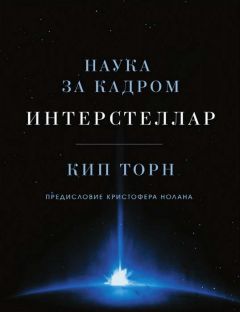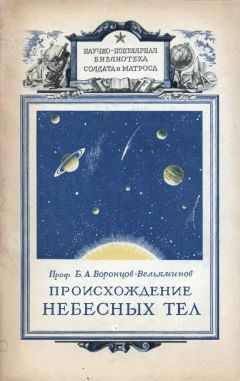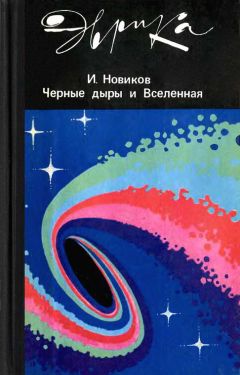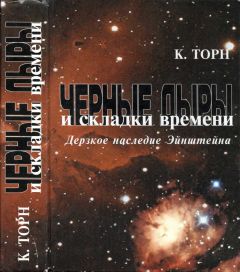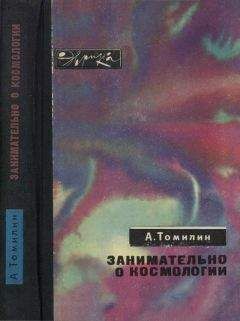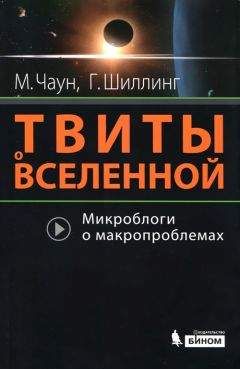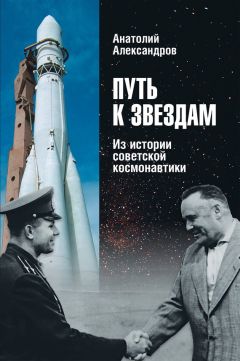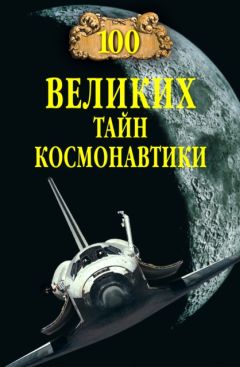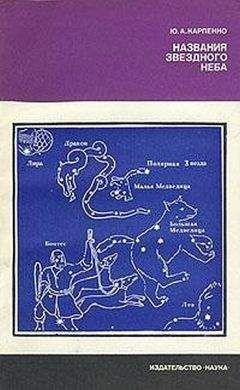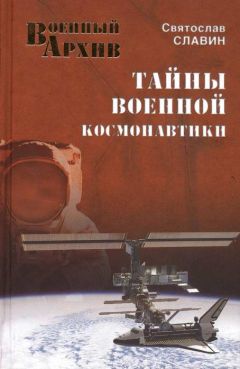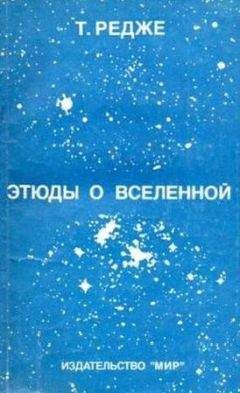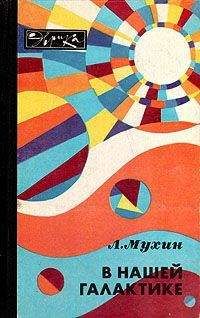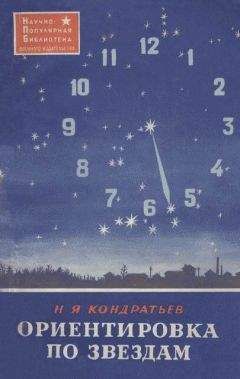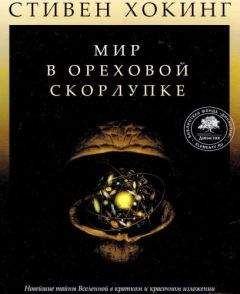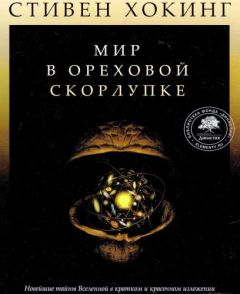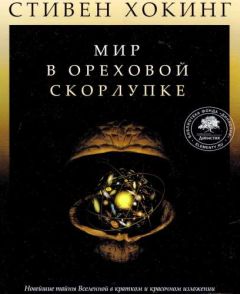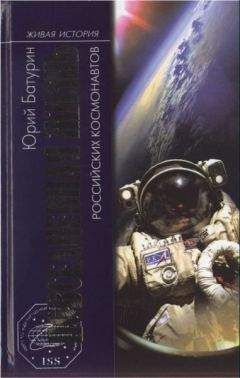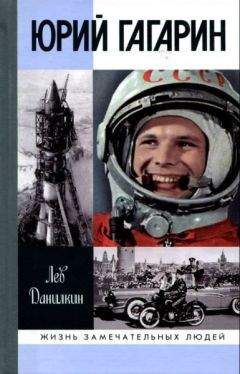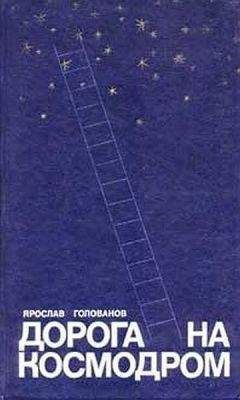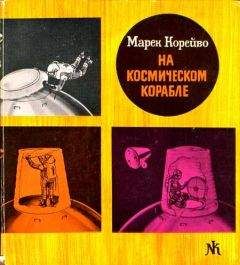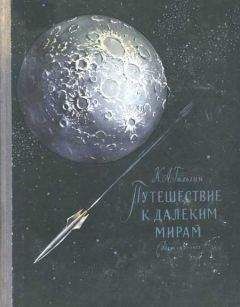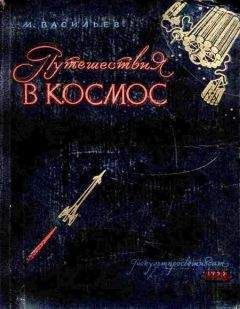Артур Миллер - Империя звезд, или Белые карлики и черные дыры
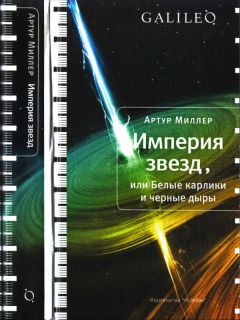
Скачивание начинается... Если скачивание не началось автоматически, пожалуйста нажмите на эту ссылку.
Жалоба
Напишите нам, и мы в срочном порядке примем меры.
Описание книги "Империя звезд, или Белые карлики и черные дыры"
Описание и краткое содержание "Империя звезд, или Белые карлики и черные дыры" читать бесплатно онлайн.
Артур Миллер, известный американский историк науки (сейчас живет в Лондоне), повествует о выдающихся открытиях астрофизиков XX века. В центре рассказа — судьба индийского физика, лауреата Нобелевской премии Субрахманьяна Чандрасекара, чьи теории во многом сформировали наши сегодняшние представления о Вселенной. Книга Миллера — об эволюции звезд, о белых карликах, красных гигантах, нейтронных звездах и о самых таинственных космических объектах — черных дырах, жадно пожирающих материю и энергию.
DANIN D.S. The Passionate Sobriety of Youth. In: I.M. Khalatnikov (ed.), Landau: The Physicist and the Man (Oxford: Pergamon Press, 1989), 78–83.
DARWIN CHARLES G. The wave equation of the electron. Proceedings of the Royal Society A, 1928, 118, 654–680.
DEVORKIN DAVID H. Henry Norris Russell: Dean of American Astronomers (Princeton, Princeton University Press, 2000).
DIMOPOULOS SAVAS AND GREG LANDSBERG. Black Holes at the Large Hadron Collider. Physical Review Letters, 1001, 87, 161602-161604.
DIRAC P. A. M. The effect of Compton scattering by free electrons in a stellar atmosphere. Monthly Notices of the Royal Astronomical Society, 1925, 85, 825–832.
The Principles of Quantum Mechanics (Oxford, Clarendon Press, 1930).
The cosmological constants. Nature, 1937, 139, 323–324.
AND R. PEIERLS AND M.H.L. PRYCE. On Lorentz invariance in the quantum theory. Proceedings of the Cambridge Philosophical Society, 1942 38, 193–200.
DOUGLAS ALLIE VIBERT. The Life of Arthur Stanley Eddington (London, Thomas Nelson & Sons Ltd, 1956).
EDDINGTON ARTHUR STANLEY. The radiative equilibrium of the stars. Reply to Mr. Jeans’s Criticism. Monthly Notices of the Royal Astronomical Society, 1917, 78, 113–115.
Letter to the Editor. Nature, 1917, 99, 445.
Report on the Relativity Theory of Gravitation (London, Physical Society of London, 1918).
Globular clusters, Cepheid variables, and radiation. Nature, 1919, 103, 25–27.
The internal constitution of the stars. Nature, 1920, 106, 14–20.
Mathematical Theory of Relativity (Cambridge, Cambridge University Press, 1923).
The relation between the masses and luminosities of the stars. Nature, 1924, 113, 786–788.
A comparison of Whitehead’s and Einstein’s formulas. Nature. 1924, 113, 192.
The Internal Constitution of the Stars (Cambridge, Cambridge University Press, ist edn, 1926; 2nd edn, 1930 with a ‘Note to the Second Impression: Reissued with a foreword by Chandrasekhar in 1988).
Stars and Atoms (New Haven, Yale University Press, 1927).
A symmetrical treatment of the wave equation. Proceedings of the Royal Society A, 1928, 121, 524–542.
The charge of the electron. Proceedings of the Royal Society A, 1928, 122, 358–369.
Excerpt from the Meeting of the Royal Astronomical Society, 8 November 1929. The Observatory, 52, 349.
Seen and Unseen World (London: Allen & Unwin, 1929).
The effect of stellar boundary conditions: A reply. Monthly Notices of the Royal Astronomical Society, 1930, 90, 808–809.
The problem of stellar luminosity. Nature, 1930, 125, 489.
Excerpt from the Meeting of the Royal Astronomical Society, 10 January 1929. The Observatory, 1929, 53, 39–40.
Letter to the Editors. The Observatory, 1930, 53, 208–211.
Excerpt from the Meeting of the Royal Astronomical Society, 9 January 1931. The Observatory, 1931, 54, 34–36.
Letter to the Editors. The Observatory, 1931, 54, 265–266.
Upper limits to the central temperature and density of a star. The Observatory, 1931, 91, 444–446.
The hydrogen content of stars. Monthly Notices of the Royal Astronomical Society, 1932, 92, 471–481.
Excerpt from the Meeting of the Royal Astronomical Society, 11 January 1935. The Observatory, 1935, 58, 37–39.
On «relativistic degeneracy». Monthly Notices of the Royal Astronomical Society, 1935, 95, 194–206.
Note on «relativistic degeneracy». Monthly Notices of the Royal Astronomical Society, 1935, 96, 20–21.
The pressure of a degenerate electron gas and related problems.
Proceedings of the Royal Society A, 1935, 152, 253–272.
Excerpt from the Meeting of the Royal Astronomical Society, 10 May 1935. The Observatory, 1935, 58, 176.
Relativity Theory of Protons and Electrons (Cambridge, Cambridge University Press, 1936).
Constitution of the stars. The Scientific Monthly, November 1936, 385–395.
Constitution of the stars. Annual Report of the Smithsonian Institution for 1932, 131–144. Lecture presented at the Harvard Tercentenary, 16–18 September 1936.
The hydrogen content of white dwarf stars in relation to stellar evolution. Monthly Notices of the Royal Astronomical Society, 1939, 99, 595–606.
Theory of white dwarfs. Conferences du College de France, Colloque International d’Astrophysique, 17–23 juillet 1939 (Paris: Hermann, 1941), 51–64.
Excerpt from the Meeting of the Royal Astronomical Society, 9 June 1939. The Observatory, 1939, 62, 171–174.
On Lorentz invariance in the quantum theory, II. Proceedings of the Cambridge Philosophical Society, 1942, 38, 201–209.
Review of Chandra’s An Introduction to the Study of Stellar Structure. Nature, 1943, 151, 91.
Fundamental Theory (Cambridge: Cambridge University Press, 1946).
The Nature of the Physical World (Cambridge, Cambridge University Press, 1928).
The Expanding Universe (Cambridge, Cambridge University Press, 1933).
The Philosophy of Physical Science (Cambridge, Cambridge University Press, 1939).
New Pathways in Science (Cambridge University Press, 1959).
EINSTEIN ALBERT. Fundamental ideas and problems of the theory of relativity. Nobel Lectures: Physics 1901–1921 (Amsterdam: Elsevier, 1967), 482–490.
On a stationary system with spherical symmetry consisting of many gravitating masses. Annals of Mathematics, 1939, 40, 922–936.
Reply to criticisms. In: Albert Einstein: Philosopher-Scientist (New York, Open Court, 1949).
ELBERT DONNA. On Working With Chandra. In: K.C. Wali (ed.), The Man Behind the Legend (London, Imperial College Press, 1997), 41–45.
EMDEN ROBERT. GASKUGELN: Anwendungen der mechanischen Warmetheorie auf kosmologische und meteorologische Probleme (Leipzig, Teubner, 1907).
ENZ CHARLES P. No Time to be Brief: A Scientific Autobiography of Wolfgang Pauli (Oxford, Oxford University Press, 2002).
FERMI LAURA. Atoms in the Family (Chicago, University of Chicago Press, 1954).
FEYNMAN RICHARD, NICHOLAS METROPOLIS AND EDWARD TELLER. Equations of state of elements based on the generalized Fermi-Thomas theory. Physical Review, 1949, 75, 1561–1573.
FOWLER RALPH H. AND EDWARD ARTHUR MILNE. The intensities of absorption lines in stellar spectra, and the temperatures and pressures in the reversing layers of stars. Monthly Notices of the Royal Astronomical Society, 1923, 81, 403–424.
General forms of statistical mechanics with special reference to the requirements of the new quantum mechanics. Proceedings of the Royal Society A, 1926, 113, 432–449.
On dense matter. Monthly Notices of the Royal Astronomical Society, 1926, 87, 114-22.
Statistical Mechanics (Cambridge University Press, 1929; 2nd revised ed., 1936).
FOWLER WILLIAM A. The stability of supermassive stars. Astrophysical Journal, 1966, 144, 180–200.
Interview by John Greenberg, 3 May 1983, OHP.
Interview by John Greenberg, 31 May 1984, OHP.
FRISCH OTTO. What Little I Remember (Cambridge, Cambridge University Press, 1979).
GALISON PETER AND BARTON BERNSTEIN. In any light: Scientists and the decision to build the superbomb, 1942–1954. Historical Studies in the Physical Sciences, 1989, 19, Part 2, 267–349.
GAMOW GEORGE. Nuclear reactions in stellar evolution. Nature, 1939, 144, 575–577.
Physical possibilities of stellar evolution. Physical Review, 1936, 55, 718–725.
Interview by Charles Weiner, 25 April 1968, AIP.
GANDHI MOHANDAS K. Autobiography: The Story of My Experiments with Truth (ist edn London, Public Affairs Press, 1948; reprinted, New York, Dover Publications, 1983).
GIDDINGS STEVEN AND SCOTT THOMAS. High energy colliders as black hole factories: The end of short distance physics. Physical Review D, 2002, 65, 056010-1-056010-12.
GLEICK JAMES. Isaac Newton (New York, Harper Collins, 2003).
GREENSTEIN JESSE, J.B. OKE AND H. SHIPMAN. Effective Temperature, Radius, and Gravitational Redshift of Sirius B. Astrophysical Journal, 1971, 169, 563–556.
On the Redshift of Sirius B. Quarterly Journal of the Royal Astronomical Society, 1985, 26, 279–288.
Interview by Rachel Prud’homme, 16 March 1982, OHP.
HAMADA T., EDWIN E. SALPETER. Models for zero-temperature stars. Astrophysical Journal, 1961, 134, 683–698.
HANSEN CARL J. AND STEVEN D. KAWALER. Stellar Interiors: Physical Principles, Structure and Evolution (New York: Springer-Verlag, 1994).
HARDY G. H. Excerpt from the Meeting of the Royal Astronomical Society, 9 January 1931. The Observatory, 1940, 54, 40.
Ramanujan (Cambridge, Cambridge University Press, 1941).
A Mathematician’s Apology (Cambridge, Cambridge University Press, 1941).
HARRISON B. KENT, KIP S. THORN, MASAMO WAKANO AND JOHN A. WHEELER. Gravitational Theory and Gravitational Collapse (Chicago, University of Chicago Press, 1965).
HAWKING STEPHEN AND WERNER ISRAEL. 300 Years of Gravitation (Cambridge, Cambridge University Press, 1987).
HEISENBERG WERNER. Mehrkörperprobleme und Resonanz in der Quantenmechanik. II. Zeitschrift für Physik, 1925, 41, 239–267.
Interview by Thomas. S. Kuhn, 30 November 1962, AIP.
Physics and Beyond: Encounters and Conversations. (New York, Harper, 1971).
Across the Frontiers. (New York, Harper Torchbooks, 1974).
HERANT MARC, STIRLING COLGATE AND CHRIS FRYER. Neutrinos and Supernovae. Los Alamos Science, 1997, №.25, 164–179.
HERREN GREGG. Brotherhood of the Bomb: The Tangled Lives and Loyalties of Robert Oppenheimer, Ernest Lawrence and Edward Teller (New York, Henry Holt, 2002).
HOLLOWAY DAVID. How the bomb saved Soviet physics. Bulletin of the Atomic Scientists, 50 (6) http://www.thebulletin. org/issues/1994/nd94/nd94Holloway.html
HOYLE FRED AND WILLIAM A. FOWLER. Nucleosynthesis in supernovae. Astrophysical Journal, 1960, 132, 565–590.
On the nature of strong radio sources. Monthly Notices of the Royal Astronomical Society, 1963, 125, 169–176.
ISRAEL WERNER. Dark stars: The evolution of an idea. In: Stephen Hawking and Werner Israel (eds.). Three Hundred Years of Gravitation (Cambridge: Cambridge University Press, 1987).
JEANS JAMES. The Radiation from the Stars. Nature, 1917, 99, 365.
The radiation of the stars. Nature, 1917, 99, 444–445.
Excerpt from the Meeting of the Royal Astronomical Society, 9 November 1917. The Observatory, 1917, 40, 432–434.
Excerpt from the Meeting of the Royal Astronomical Society, 9 January 1931. The Observatory, 1931, 54, 36–38.
JOHANSSON SVEN. The Nobel Prize for Physics. In: Tore Frangsmyr (ed.). Nobel Lectures in Physics: 1981–1990 (Singapore: World Scientific, 1993), 135–137.
KANIGEL ROBERT. The Man Who Knew Infinity: A Life of the Genius Ramanujan. (New York, Charles Scribner’s Sons, 1991).
KERR ROY. Gravitational Field of a Spinning Mass as an Example of Algebraically Special Metrics. Physical Review Letters, 1963, 11, 237–238.
KHAN K. A. AND ROGER PENROSE. Scattering of Two Impulsive Gravitational Plane Waves. Nature, 1971, 229, 185–186.
KHARITON YULI, KITOR ADAMSKII AND YURI SMIRNOV. The way it was. Bulletin of the Atomic Scientists, 1998, 54 (6); website http://www.bullatomsci.org/issues/1996/ nd96/nd96khariton.html
AND YURI SMIRNOV. (1993), ‘The Khariton version’. Bulletin of the Atomic Scientists, 1993, 49 (3); website http://www.thebulletin.org/issues/1993/may93/may93Khariton.html>
KHRIPLOVICH IOSIF B. The eventful life of Fritz Houtermans. Physics Today, 1992, 45, 29–37.
KILMISTER CLIVE W. Eddington’s Search for a Fundamental Theory: A Key to the Universe (Cambridge: Cambridge University Press, 1994).
KRAGH HELGE. Cosmo-physics in the thirties: Towards a history of Dirac cosmology. Historical Studies in the Physical Sciences, 1982, 13, 69-108.
DIRAC: A Scientific Biography (Cambridge: Cambridge University Press, 1990).
KUIPER G. P. White dwarfs: Discovery, observations, surface conditions. In: Conferences du College de France, Colloque International d’Astrophysique, 17–23 juillet 1939 (Paris: Hermann, 1941), 3-39.
LANDAU LEV. On the theory of stars. Physikalische Zeitschrift der Sowjetunion, 1932, 1, 285–288.
Origin of stellar energy. Nature, 1938, 141, 334–335.
LANG KENNETH AND OWEN GINGERICH. A Source Book in Astronomy and Astrophysics, 1900–1975 (Cambridge, MA. Harvard University Press, 1979).
LEE T. D. Hydrogen content and energy-productive mechanism of white dwarfs. Astrophysical Journal, 1950, 111, 625–640.
LITTLEWOOD J. E. Littlewood’s miscellany. Edited and with a foreword by Bela Bollobas. (Cambridge: Cambridge University Press, 1953), 1-22.
LUNDMARK KNUT, SERGE GAPOSCHKIN, BENGT EDLEN, C.P. GAPOSCHKIN, F.J.M. STRATTON AND C.S. BEALS (EDS.). Novae and White Dwarfs, Colloque International d’Astrophysique, 17–23 July 1939, under the presidency of Henry Norris Russell (Paris, Hermann, 1941).
MARSHAK ROBERT EUGENE. The Internal Temperature of White Dwarf Stars. Astrophysical Journal, 1940, 92, 321–346.
MCCREA WILLIAM H. The International Astronomical Union meeting in Paris 1935. The Observatory, 1935, 58, 256–265.
EDWARD ARTHUR MILNE: Obituary notice. Monthly Notices of the Royal Astronomical Society, 1951, 111, 161-70.
Interview by Robert Smith, 22 September 1978, AIP.
Harry Hemley Plaskett. Biographical Memoirs of the Royal Society, 1981, 27, 445–478.
Subrahmanyan Chandrasekhar. The Observatory, 1996, 116, 121–124.
Letter to the Editors. The Observatory, 1998, 118, 24.
MCVITTIE GEORGE C. Interview by David DeVorkin, 21 March 1978, AIP.
MERRILL PAUL W. The Nature of Variable Stars (New York, Macmillan, 1938).
MILLER ARTHUR I. The Myth of Gauss’ Experiment on the Euclidean Nature of Physical Space. ISIS, 1972, 63, 345–348.
Measurement problems in quantum field theory in the 1930s’. In: A. I. Miller (ed.). Sixty-Two Years of Uncertainty: Historical, Philosophical, and Physical Inquiries into the Foundations of Quantum Mechanics (London, Plenum Press, 1990), 139–152.
Early Quantum Electrodynamics: A Source Book (Cambridge, Cambridge University Press, 1994).
Albert Einstein's Special Theory of Relativity: Emergence (1905) and Early Interpretation (1905–1911) (Reading, MA, Addison-Wesley, 1981: Reprinted, London, Springer-Verlag, 1998).
Insights of Genius: Imagery and Creativity in Science and Art (New York: Springer-Verlag, 1996; Cambridge, MA, MIT Press, 2000).
Erotica, aesthetics and Schrödinger’s wave equation. In: Graham Farmeloe (ed.). It Must be Beautiful: Great Equations in Modern Science (London, Granta, 2002), 80-101.
MILNE EDWARD ARTHUR. Those in Authority: R. H. Fowler M. A. (Trinity), Senior Lecturer. The Granta, 1923, 32, 469.
Excerpt from the Meeting of the Royal Astronomical Society, 14 November 1930. The Observatory, 1930, 53, 330-4.
The analysis of stellar structure. Monthly Notices of the Royal Astronomical Society, 1930, 91, 4-55.
Подписывайтесь на наши страницы в социальных сетях.
Будьте в курсе последних книжных новинок, комментируйте, обсуждайте. Мы ждём Вас!
Похожие книги на "Империя звезд, или Белые карлики и черные дыры"
Книги похожие на "Империя звезд, или Белые карлики и черные дыры" читать онлайн или скачать бесплатно полные версии.
Мы рекомендуем Вам зарегистрироваться либо войти на сайт под своим именем.
Отзывы о "Артур Миллер - Империя звезд, или Белые карлики и черные дыры"
Отзывы читателей о книге "Империя звезд, или Белые карлики и черные дыры", комментарии и мнения людей о произведении.





